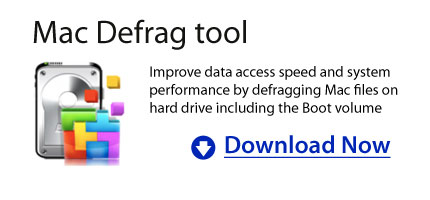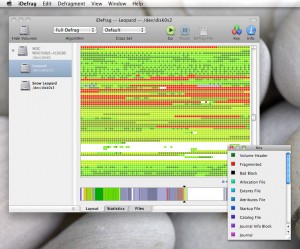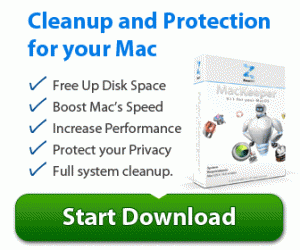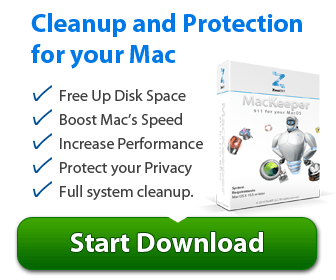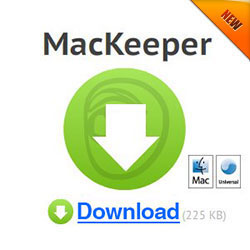Mac Disk Defrag Tool: Is It Possible For Mac?
April 18, 2011
Defragmentation and disk optimization in Mac OS X is still a continuing debate among the Mac users. Even Apple states that their Mac won’t need to defrag their Mac OS X however offer instructions on how to defrag Mac just in case users might need it. If your looking for Mac disk defrag tool that is right for the Mac, you can easily select from the wide variety of defragging tools that will optimize and boost the system’s performance in the process.
There are two main scenarios why fragmentation occurs and this can be due to large files that are created more often and the disk space is already low in memory. If this happens there are some simple remedies that you can do about it.
For large files that are filling up the hard drive it is necessary to create a backup copy of all these important files. Then re-install the Mac operating system and then restore back all your old files. This can be tedious at all but quite effective too. Other options include running a utility such as SuperDuper that will create a clone of the startup drive and then format the drive with the use of Disk Utility and retrieve back the files in the system.
But other remedies that you can do is defragment Mac hard drive and before you go on defragging your Mac you need to understand first the difference between disk defragmentation and disk optimization.
Fragmentation is a process where different parts of files are split and stored into multiple locations in the hard drive. The hard drive on the other hand has to look for different locations when accessing these files thus taking the access time quite longer. But with Mac OS X’s HFS+ files system, it safeguards the files from getting fragmented. The file system will prevent using the recently freed space from files that have been deleted whenever possible and look for other greater space in the hard disk that free and available. And one more thing, Mac OS X will group together these smaller portions of space into larger portions automatically with the process known as Hot-File-Adaptive-Clustering. These simple routines in Mac already perform defragging process in a way.
On the other hand disk optimization is a different process from defragmentation with a different end as well. Defragmentation gathers all the files into one location in the hard disk whereas optimization deals with organization of all related files into one location for accessing it altogether easily for improved system performance. But when a tool known as iDefrag that is already a disk optimization and defragmenter at once, then it is now easily to arrange all files together and store in into one location for increased performance. The said application also shows the amount of fragmented files in the system and help you decide what to do about it. It even uses different defragging algorithms for quicker and effective defragging process.
Although some Mac users are still reluctant to defrag their Mac, there is no really harm in doing it. Because over time you cannot prevent the hard disk from getting fragmented and it is important to choose the right Mac disk defrag software that is capable of optimizing and defragging the Mac system at once and iDefrag can offer it to you all in all.
Incoming search terms:
If you are using your Mac system more often and you are creating, importing, moving and copying files from time to time, chances are your hard disk may be fragmented. For Mac system this is something that you worry less because the system itself is built with routine maintenance that is run periodically. However for new to Mac system they wonder if how can they deal with fragmentation problem and do they need a defragmenter for Mac?
Why Defragment Mac Hard Drive?
If you’re one of the Mac users that move files around, delete applications and emptied the trash more often then your hard drive can be very messy internally. Although Mac OS X has already built-in routine maintenance that will automatically defragment the files but this does not mean that the system is optimize. To boost the hard drive speed it is quite helpful and beneficial that you use third party defragmenter tool and optimization tool for your Mac system.
How Hard Drive Works?
Before you go on selecting the right applications that will defragment your hard drive it is necessary that you have a basic understanding how the hard drive performs and why defragging happens. Hard drive is a circular disk and once data is saves in the disk it spins and data are written into it sequentially from the first open space that it can locate. Once the space is not big enough the rest of the data are stored in other locations on the disk.
If you happen to install and uninstall application and delete files more often, the hard disk becomes full and files will be stored on different locations on the hard disk. The disk need to spin a lot of times to gather that data and put it back together. The more it spins it degrades its performance thus affecting the whole system performance.
Normally when this problem happens, the system’s response time will get slower and it takes longer to organize all the files that are located in different locations. The problem got worst when applications are stored in noncontiguous manner. Once the hard disk is defragmented files are stored in one location thus hard disk spend lesser time in spinning and locating for files thus improve the system’s performance.
Defragmenter for Mac
Using third party defragmenter applications will reorganize the files that are stored in the hard disk. Doing this will improve the response time of Mac hard drive and will resolve the problems on fragmented files. Running a defragmenting tool is simple and before you decide to does it make sure to have a back up copy of all your important files. And when you’re defragging the hard drive choose an appropriate time when the Mac system is idle.
Before you decide to defragment your Mac, analyze the hard disk once in awhile to make sure that they are not getting fragmented. You can do this by using third party defragmenter for Mac that will make sure that all your files are organized and Mac performance is greatly enhanced.
iDefrag Mac
March 29, 2011
The Solution to Defrag Your Mac’s Hard Drive?
When you’re a Windows platform user you need to pay attention to defragmenting hard drives, installing antivirus applications and firewall applications as well. However if your into Mac system you don’t need to pay attention to all of these. But this does not mean that you don’t need to defrag Mac’s hard drive using iDefrag Mac application.
Mac system is already known to be built with maintenance routines that are update more often thus allowing users to have lesser problems on tweaking its performance. When it comes to defragmenting the Mac system one of the best recommended tool is the iDefrag. Here are some features regarding the applications, go through it and reflect whether you need it or not.
Do you need to Defrag Mac System?
For Windows users defragging the hard drive is needed in every few months. This can be disappointing at times because even the built-in defragging software took several hours to finish the defragging process. Most new to Mac system might wonder if they need to defrag their Mac and how they can do it. Most people would tell them that it is not really needed at all. However, even the Apply Company itself sees the importance of defragging the Mac system. The iDefrag Mac applications have been around few years back and have been known already fro defragging the Mac hard drive.
iDefrag Defragging Tool for Mac
iDefrag have its trial version and can be readily downloaded from its developer’s site. The trial demo version has a limited features but it can actually offer what it can do to the system. After downloading and installing the applications you will see the available volumes on the left pane. You can’t make any changes to the drives until you enter the Administrator password.
Then click the lock icon to authenticate and verify the password. Once done, the application will start scanning the drive and then on the right pane it will show the drive’s content. The visual linear graphic at the bottom panel will tell you if the drive is already in good shape.
Once the defragging process took place you will notice that most of the fragmented files are sorted out and the Mac system will be running faster at this time. You need to select the five defragging Algorithms offered by the iDefrag tool from the pull down menu located at the toolbar. You can select Compact, Quick, Optimize or Full Defrag options from the given options.
Just remember if you choose to defrag your Mac hard drive be aware that files that are stored in different locations can be moved. And in case if anything goes wrong you need to perform a full back up first with your files.
iDefrag Algorithms
If you wish to defrag your Mac startup volume it is needed that you restart first the computer to complete the Quick algorithm options. The Full Defrag is the common option to do in defragging the system. It is already a combination of Metadata and Optimize algorithms. The Metadata algorithms deal on the volume metadata and the adaptive hot file clustering system while the Optimize algorithm deals in the disk optimization options and rearranges the files on the disk. The iDefrag tool will eventually boot the machine in a special mode while doing the defragging process.
Although some people would advice you that you don’t need to defrag the Mac system but doing it might be helpful at all. Running defragmentation process will eventually boost the Mac performance. So when it comes to defragging Mac hard drive you can rely on iDefrag Mac applications.
Incoming search terms:
How to Defrag Mac
March 27, 2011
If you are using Mac system the company itself doesn’t need defragging the hard disk on Mac. The Mac OS itself is built with its own optimization tool that can perform its own defragmentation process. However this is quite limited and this is the reason why iDefrag comes on the scene.
The Mac HFS file system already put files in one location on the hard disk. It groups the files into one logical unit for better and faster access time. It allows the files size to expand easily without the need to undergo fragmentation. This will work only on larger disks that have lots of space. However, Mac HFS also experience file fragmentation. This is quite true when the disk is already full and already runs out of space. The smaller space that is located in the disk will soon adds up and will result to file fragmentation this is the time when defragmentation is needed in order to organize files better and efficiently.
The iDefrag application is built with two parts. The general interface and the other one is for booting. If you want to defrag Mac properly you need to run the application when the operating itself is not running or not in used. This is done through startup disk. The main interface of iDefrag is quite easy and simple to use. Once you launch the application just select the disk where the defragging will take place. It will then search every file on the disk and display it on the window pane. It will also show you where the files are stored and the amount of fragmentation on the disk. The last step is to defrag the hard disk by running the startup disk defragger. After the defragging process is done you will notice that it is faster to download some larger files in the Mac system.
The iDefrag application is loaded with lots of information and quite pretty too. The information pane will show you the file name, size and location on it in the hard disk. The application takes slower when it compiles the image that contains the files and block on the disk. Defragging process can take too long and can be time consuming as well so if you want to defrag your system choose the right time when it is idle. For the overall view, the program is quite good when it comes to defragging Mac. This is price at a value of £20. Another thing also the application features Hot Zone.
Now if you are thinking that your Mac system doesn’t need defragging, it is better this time that you consider defragmentation process because this is quite beneficial for your Mac computer. If you want to defrag Mac you can use iDefrag as one of the recommended tool for doing it. This makes the defragging process a lot more easily and better compared to Mac optimization tool that is quite limited. It comes with features that can handle defragging task easily. This is surely an application worth trying on your Mac system so try and download it now!
Defrag Mac: Does Your Mac Need It?
March 25, 2011
Most Mac users are wondering if defragging their Mac OS and disk optimizing is an effective way in order to repair disk permissions. Even Apple itself is confident that the Mac OS X doesn’t need defragmentation because the system itself is built with its own optimization tool. However defragging might not hurt your system at all particularly of you have large files stored in the hard drive and the memory is already low. If you wish to defrag Mac you can do it and somehow this can also improve the performance of Mac system.
If you think that your Mac system is already slow and applications are taking longer to open then the next thing that you can do is create a backup copy of all your files in the hard drive, then re-install the Mac operating system and then retrieve your important files back to the system. This is quite time consuming and risky thing that you can do but will eventually makes the system to run faster and access the files easily. Another way to do this is use some defragging tools that will create a clone in the drive, reformat the hard drive and then restore back the old files in the system. This is one of the fastest remedy for your slow Mac system.
Is there a Need for Mac Os X Defrag?
Fragmentation is a method where files are divided into separate parts and then stored in different locations in the hard drive. When files are accessed it will look on different locations causing the system instead to slow down. Files systems are composed of different portions that are separated from each other. Once the hard drive is full it will used the smaller space on the disk that will result in dividing the files into smaller chunks and store it in different locations. This is already a process known as fragmentation.
The Mac OS X HFS+ file system don’t need defragging process because the system will only used the space on the hard drive that is recently freed before it will look for other areas where they can store their files. Mac OS X also bundle the smaller space altogether making it into larger portions. And lastly Mac itself perform their own defragmentation process known as Hot-File-Adaptive-Clustering that reduces the files t be fragmented.
Some Mac users often relate defragmentation to disk optimization. This is a different process actually. Disk optimization organize all related files into one group in order to improve the performance of the system unlike fragmentation where it split the files into different chunks and store it to different location. One of the common defragging utility for Mac is the iDefrag application that changes the arrangement of files in the hard disk drive in order to improve the performance of the Mac system.
Mac users are often confused if there is a need to defrag Mac OS X. Although the Apple Company does not recommend doing this but defragging the system is quite beneficial too. Mac OS X itself is built with its own optimization tool to perform its own defragmentation process but disk optimization and defragmentation can be a better solution to improve the overall performance of the Mac system.
Incoming search terms:
Defrag Mac with iDefrag Tool
March 19, 2011
Been worried about your Mac performance? Did your applications take longer to open and close or you files are quite hard to locate? All of these are causing problems in your Mac system and defragging this can be the solution. There are a lot of defragging tools that you can choose for your Mac and one of the recommended tools that are catching up on the list is the iDefrag. Want to know more about this defragging tool? Here are some features that might indulge you to try this application for your Mac system.
Over time ad you constantly update your security and replace your operating system, chances are you are also increasing the chance that your files will be fragmented. This leads not only to slow Mac performance but will clutter your hard drive disk also. The iDefrag can check for the fragmented files in your hard disk, defragment these files and optimize the overall performance of Mac system. The following features of iDefrag are the following:
iDefrag application supports both the HFS and HFS+ as well ad sensitive and journaled files systems amd even the adaptive hot file clustering. This also uses powerful defragging algorithms including Compact data where it allows you to move all the available free space into one location, enhances the filesystem metadata, defragmentation through online, even if the disk is mounted defragment whilst is still possible, programmable optimization and arranges the hard disk according to your preferences.
It is also supported with B-Tree metadata file compaction and optimization. It uses high performance user defined engine for file classification and display also the whole disk lists. It also shows graphic and detailed statistics that will help you determine when you need to optimize your disk. The Inspector tool will show all the details of individual files in the hard disk and you can easily go to specific files that you want to examine in detailed. It is also built with auto-update feature so that you will always get the latest version of the application. And it has fined grained security features and supported by AppleScript.
The new added version of iDefrag can also fixed bug problems that might cause the application to stop during the defragging process once the errors are detected. It can also fix a minor fault when resizing the iDefrag window pane and even resolve the problems when installing the codes that might fail to restart properly once the installation is done. The application requires PPC and Intel as well as Mac OS X with 10.5 versions or lower. And lastly the application is capable of thermal monitoring that will tell you the temperature of your hard drive that can cause slowed Mac system performance when it is already warm.
This time if you are considering to defrag Mac, I think it will be best to try and install iDefrag applications in your Mac system. It comes with advance features that ensures that your files are defragmented causing to speed up and improve your Mac performance in the process.
Defrag Mac with iDefrag: Is It Really Needed
March 17, 2011
Over time as you use your Mac system, the performance of it tend to get slower. This can resolve by defragging the hard disk drive with the right software tool that is capable of doing that too. But some Mac users often wonder if they really need to defrag Mac? Before you download and install some defragging applications in your Mac why not consider these helpful tips too.
Do Mac systems need to defrag the hard drives? This really depends. You need to consider first why your Mac has slower performance and what you can do about it. Often times as you use your Mac OS X and perform multiple backups, install applications everyday and save files in the hard drive you will notice that the system has degraded its performance. This can really cause the slower performance of the Mac system. Some applications will take longer before it opens and closes. Some might consider that the fragmentation is the main problem of this.
As Mac users you would often consider defragging as the solutions. But before you does this try some other measures to check what you can do first with your Mac hard drive. Create a solid backup first with other external devices and make sure that all files are being backed up. And then select from the different defragging tools that will work on Mac hard drive. You can choose from iDefrag, Drive Genius and a lot more.
Considering to do back up, removing files in the disk drive, installing again the Mac OS X and other applications and then restoring the files again in the system can quite a tedious job before your Mac will run faster. But with iDefrag improving the performance of Mac is quite easy. It allows you to select the files that you want to defrag and it don’t require a bootable CD or DVD to make it work. It also controls the HFS Plus and even monitors the temperature of the Mac drive that can also slows down your system if it gets warm too.
Another thing that iDefrag can do is check the individual sections on the hard disk, view the changes that has been in real time and uses different defragging algorithms in order to optimize the hard disk and most of all you can rearrange the files according to your preferences. You can do this simply by running the iDefrag, and then select the disk that you want to defrag; select either Full Defrag and Default defragging algorithms and then click go. The application also check the hard disk, display the list of files that are fragmented and click which files you want to defrag.
Before considering to defrag Mac you need to look first what cause the slowed performance of your Mac system. Usually files that have been cluttered in the hard disk and applications that are installed in the system is the main culprit of the problem. One way to resolve this is creating back up copy in external devices and re-installing the Mac OS. This is quite a risky thing to do because some files may be lost during the process. But when you choose to select the right defragging tool that will defrag your Mac OS effectively then this is much better solution. When it comes to defragging files in hard drive the iDefrag is one of the recommended tool for you system so better try and download it now!
Incoming search terms:
It There A Need For Mac to Defrag?
February 25, 2011
Most Mac users that are new to using this system often wondered if they need to defrag their Mac’s hard drive. Unlike the Windows operating system, routine derfragging process is needed to ensure that it is on its top performance. This seems true for Mac system as well and Mac users should be concerned about this. Is there a need for Mac defrag software in your Mac system?
Although Mac system is quite protected and enhanced periodically that defragging it is not needed more often. It is designed with hand application that already enhanced the hard drive capacity and this utility is known as the Disk Utility. The Disk Utility do not include a defragmenting tool in the hard drive because the company itself perceived it already that Mac OS X on its higher versions do not need to be defragmented. The said operating system is already built-in with security measures to prevent the files from being fragmented.
The Mac OS X HFS+ file system as much as possible will not used the recently freed up space in the hard disk. This will look for larger areas that are free in the drive. Doing this will prevent files from being fragmented and let it fit to the available larger space. Another thing that is advantageous with Mac OS X is that is gathers the files and group it into larger areas automatically in the hard disk. When files are written into new larger location this is already defragging process.
The Hot File Adaptive Clustering also monitors the files that is accessed more often and then place these files on a hot zone in the hard drive. Moving them to another location is already a defragging process. The files are ensured to be placed in hard drive area where fast access is possible. Then The Mac OS X also defrags the disk when it detects that it is already fragmented.
Doing this safeguard measure in Mac OS X already don’t need that hard disk space to be defragmented but then when the hard drive is already full of files and a little space is already available, then it cannot perform an automatic routine of defragging it thus it is necessary also to employ third party applications that performs defragmentation on Mac system.
If you are looking for Mac defrag software you can rely on iDefrag as one of the recommended tool. This can perform defragmentation process in your Mac system and ensure you that the system is at its top performance and will run efficiently as well.
Mac system is already built in with architecture that performs an automatic defragging process in the system. It employs the Disk Utility tool that prevents the hard disk to be defragmented more often. Unlike the Windows platform that requires defragging more often, Mac OS is far more different from it. But then when the hard disk space is only 10%, the Disk Utility cannot perform the defragging process already thus it is advisable also to at least employ a defragging tool for your Mac system.
